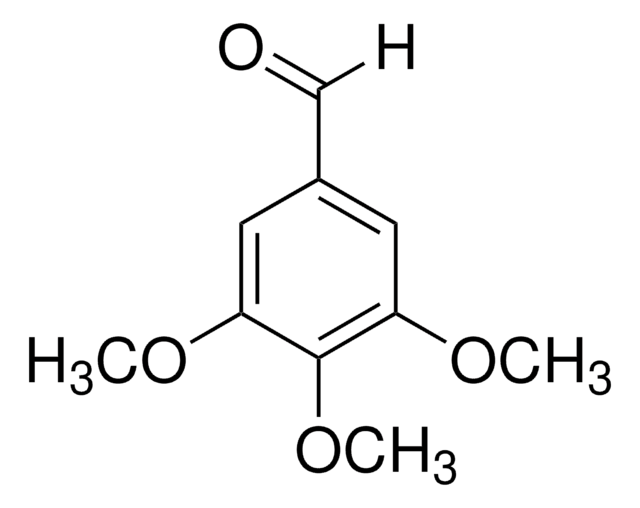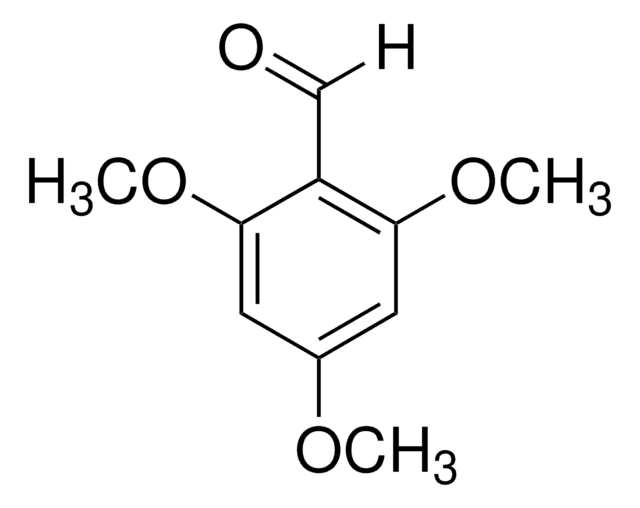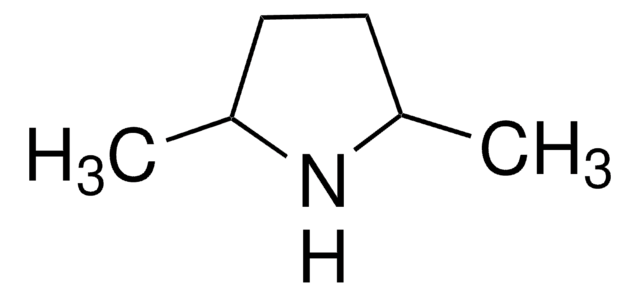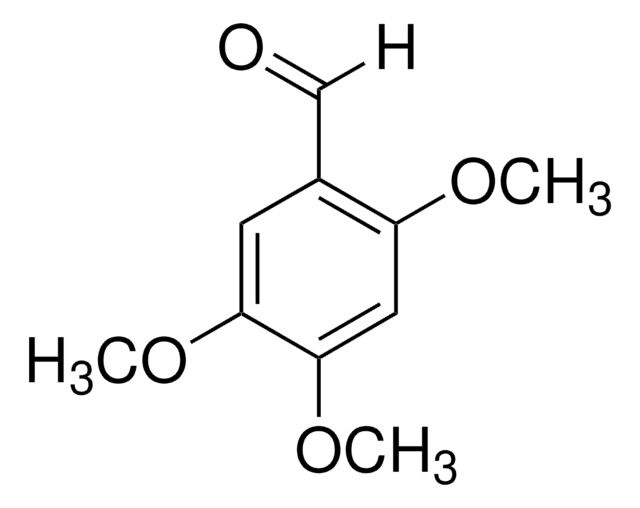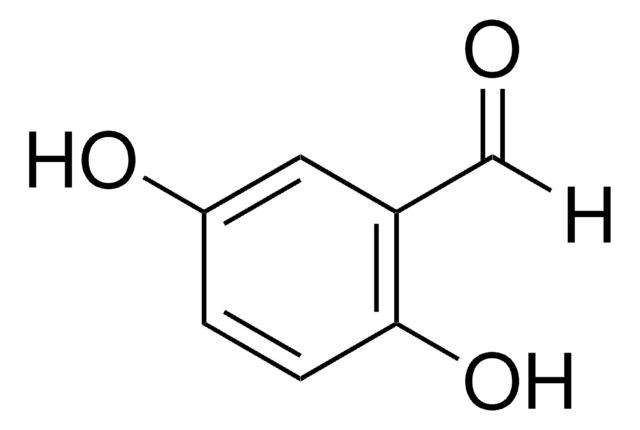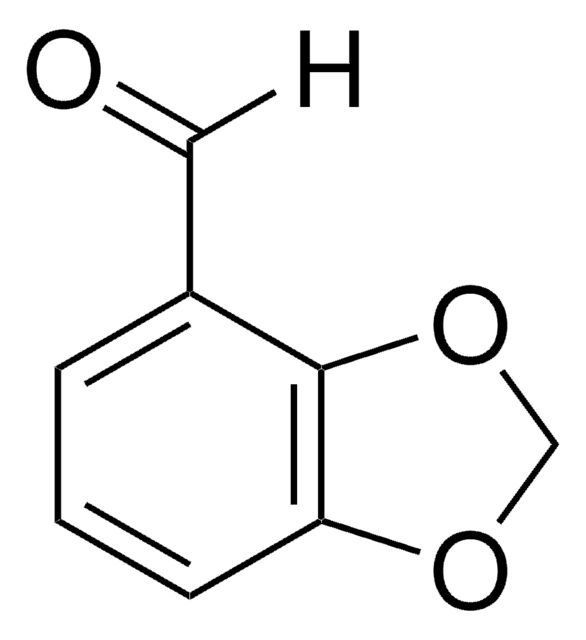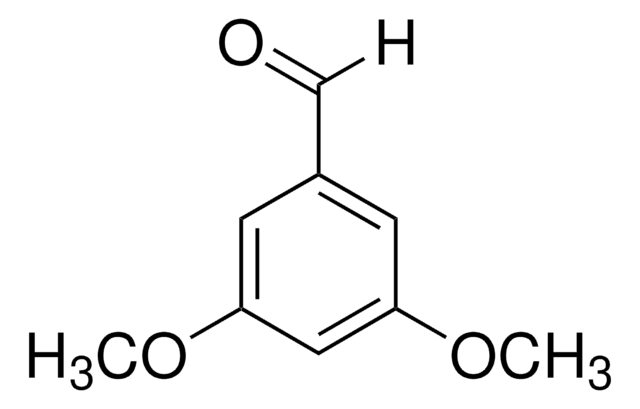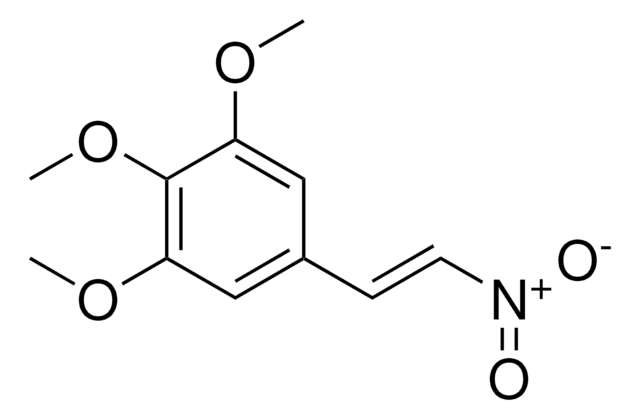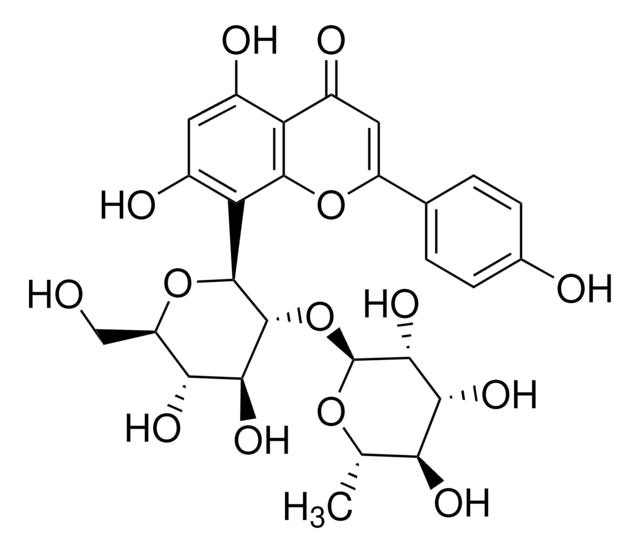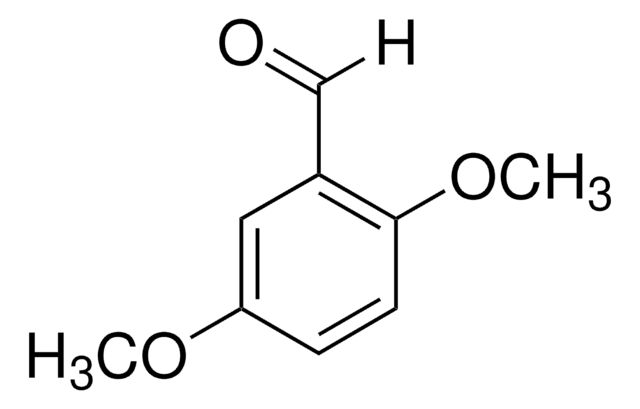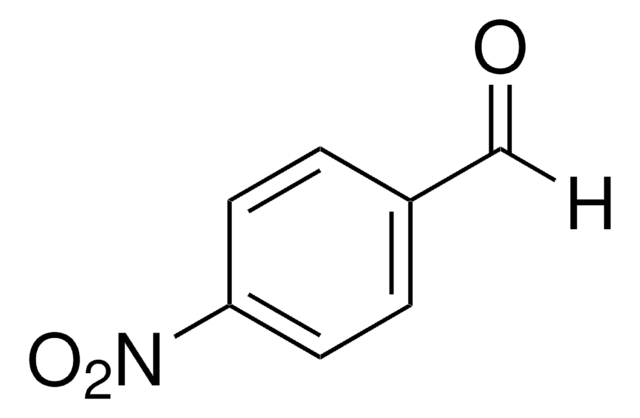132152
2,4,5-Trimethoxybenzaldehyde
98%
Synonym(s):
Asaronaldehyde
Sign Into View Organizational & Contract Pricing
All Photos(1)
About This Item
Linear Formula:
(CH3O)3C6H2CHO
CAS Number:
Molecular Weight:
196.20
Beilstein:
1951403
EC Number:
MDL number:
UNSPSC Code:
12352100
PubChem Substance ID:
NACRES:
NA.22
form:
solid
Assay:
98%
Recommended Products
Assay
98%
form
solid
mp
112-114 °C (lit.)
functional group
aldehyde
SMILES string
[H]C(=O)c1cc(OC)c(OC)cc1OC
InChI
1S/C10H12O4/c1-12-8-5-10(14-3)9(13-2)4-7(8)6-11/h4-6H,1-3H3
InChI key
IAJBQAYHSQIQRE-UHFFFAOYSA-N
Looking for similar products? Visit Product Comparison Guide
Signal Word
Warning
Hazard Statements
Precautionary Statements
Hazard Classifications
Acute Tox. 4 Oral
Storage Class Code
11 - Combustible Solids
WGK
WGK 3
Flash Point(F)
Not applicable
Flash Point(C)
Not applicable
Personal Protective Equipment
dust mask type N95 (US), Eyeshields, Gloves
Choose from one of the most recent versions:
Already Own This Product?
Find documentation for the products that you have recently purchased in the Document Library.
Customers Also Viewed
Chien-Chi Chiang et al.
Journal of agricultural and food chemistry, 61(38), 9160-9165 (2013-08-13)
The antiproliferation activity of the ethanol extract of A. cinnamomea mycelium on hepatocellular cancer cells HepG2 was found to be associated with aroma intensity of the broth during fermentation. We hypothesized that some of the volatile compounds are the precursors
D Dillon et al.
Mutagenesis, 13(1), 19-26 (1998-03-10)
Several aldehydes and peroxides were tested for mutagenicity using Salmonella typhimurium tester strains TA97a, TA100, TA102 and TA104, in the presence and absence of Aroclor-induced liver S9 mix from F344 rats and B6C3F1 mice, in either preincubation or vapour phase
C-C Chen et al.
Letters in applied microbiology, 44(4), 387-392 (2007-04-03)
To investigate the active ingredient in fruiting bodies and to produce it with cultured mycelium in Antrodia camphorata (BCRC 35398). The volatile components from the fruiting bodies, the liquid cultured broth of A. camphorata and Cinnamomum kanehirae wood were separately
X Xu et al.
Infection and immunity, 69(7), 4465-4472 (2001-06-13)
Treponema denticola does not appear to produce siderophores, so it must acquire iron by other pathways. Indeed, T. denticola has been shown to have an iron-regulated 44-kDa outer membrane protein (HbpA) with hemin binding ability. To characterize the HbpA protein
A R Chaudhuri et al.
Biochemistry, 37(49), 17157-17162 (1998-12-23)
Tubulin, the major subunit protein of microtubules, has a tendency to lose its ability to assemble or to interact with ligands in a time-dependent process known as decay. Decay involves the increase in exposure of sulfhydryl groups and hydrophobic areas.
Our team of scientists has experience in all areas of research including Life Science, Material Science, Chemical Synthesis, Chromatography, Analytical and many others.
Contact Technical Service